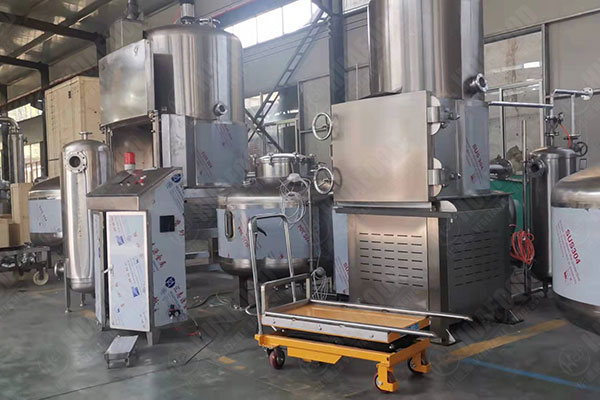Вакуумная жарочная машина cost typically ranges from a few thousand dollars to hundreds of thousands of dollars depending on the machine’s capacity, design complexity, degree of automation, and internal system configurations. For buyers in the food processing industry—especially those producing fruit and vegetable crisps, meat snacks, or plant-based fried products—understanding what drives this cost is crucial for selecting the right equipment that balances budget with performance.
Unlike traditional fryers, vacuum frying machines operate under low pressure and at lower oil temperatures (typically 80–120°C), which helps preserve product color, вкус, and nutrients.

Below, we break down the key equipment-level factors that determine the total cost of a vacuum frying machine.
1. Frying Chamber Size and Design
The frying chamber is the core unit where food is processed under vacuum. Its volume, geometry, pressure tolerance, and internal flow design directly impact cost.
- Larger chambers that accommodate higher batch capacities (50–150 kg/batch) require reinforced pressure-resistant structures, increasing material and manufacturing costs.
- Double-layer insulation, precise inner lining, and food-grade polishing also affect pricing.
- High-end systems may include multi-zone designs to allow sequential or simultaneous processing, which further increases complexity and cost.
2. Vacuum System Configuration
The vacuum generation system is a major cost component, often accounting for 20–30% of the machine’s total value.
- Entry-level systems use single-stage oil-sealed rotary vane pumps, which are cost-effective but slower to reach deep vacuum.
- Mid- to high-end models incorporate multi-stage rotary vane + booster pump combinations, or liquid ring vacuum systems with water cooling, allowing faster evacuation and stable pressure control under continuous operation.
- Key technical variables influencing cost:
- Ultimate vacuum level (measured in Pa or mbar)
- Pump-down speed (L/min)
- Pump oil circulation and cooling systems
3. Heating and Temperature Control System
Precise control of oil temperature is essential for consistent product quality and oil stability. This subsystem can vary significantly in complexity:
- Basic models use electric heating tubes with manual thermostats.
- Advanced machines employ PID-controlled indirect heating systems with temperature feedback loops, which maintain ±1°C accuracy.
- Industrial systems may integrate heat exchangers for energy recovery or use thermal oil circulation, which adds cost but improves energy efficiency and uniformity.
4. Oil Filtration and Circulation System
Vacuum frying generates fine particulates and moisture that degrade oil quality. To maintain oil clarity and extend oil life, machines are often equipped with:
- Cyclone or mesh pre-filters
- Continuous loop oil filtration
- Cartridge or bag filters with bypass valves
- Optional: Defoaming agents injection systems or automatic oil draining valves
Filtration efficiency, automation, and ease of cleaning directly influence equipment pricing and operating costs.
5. De-oiling (Centrifugal Separation) System
After frying, removing surface oil from the product is essential for texture, shelf life, and fat content control.
- Some machines feature an integrated centrifugal de-oiling chamber within the vacuum system.
- More advanced configurations use independent variable-speed de-oiling drums with programmable spin cycles and vacuum retention, offering better oil removal with minimal product damage.
- Shock absorption, drum balancing, and discharge automation all contribute to increased costs.
6. Control System and Automation Level
Control systems can range from simple analog button panels to fully integrated PLC+HMI touch screen interfaces.
- Advanced systems allow:
- Real-time vacuum, temperature, and time control
- Multi-batch recipe programming
- Error diagnostics and safety interlocks
- Integration with SCADA or MES systems for remote monitoring or data logging is another cost-driving upgrade for industrial users.
7. Material Selection and Structural Standards
Though stainless steel (usually SUS304 or SUS316) is standard, тот thickness of the steel, type of welding, and surface finishing affect durability, food safety, and cleaning ease.
- Food contact parts often require mirror polishing or electropolishing.
- Industrial-grade machines may comply with ASME or EN pressure vessel codes, which increases material and certification costs.
Conclusion
When evaluating vacuum frying machine cost, it’s essential to look beyond the price tag and assess the machine’s technical composition. Each subsystem—from vacuum generation and heating to filtration and automation—plays a direct role in both the machine’s effectiveness and its total cost of ownership.
By understanding these professional-level cost drivers, buyers can make more informed decisions tailored to their production goals, quality requirements, and budget constraints.
 Вакуумная жарочная машина
Вакуумная жарочная машина

